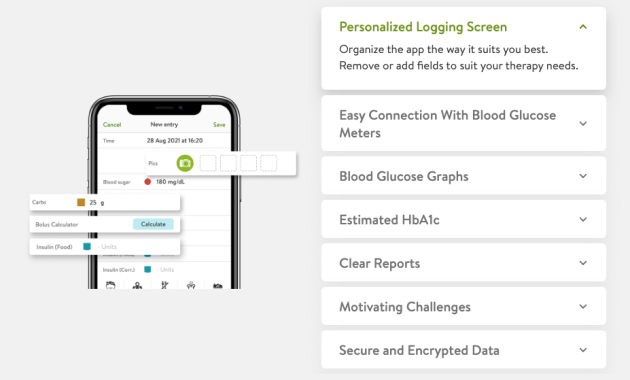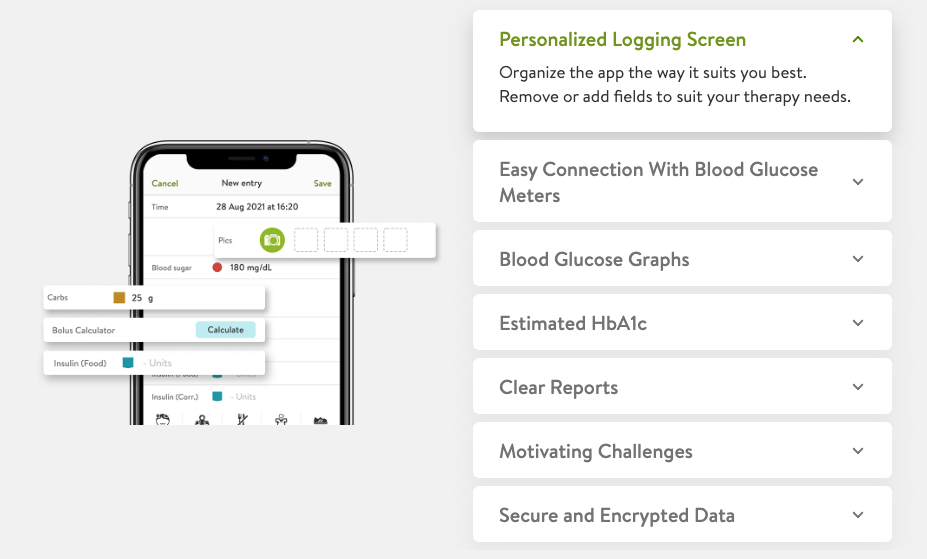
Diabetes App Guide: Simplifying Daily Management for a Healthier Life
Managing diabetes can feel like navigating a complex maze. Constant monitoring, medication schedules, dietary restrictions, and the ever-present worry of complications – it’s a lot to handle. Fortunately, technology offers a powerful ally: diabetes apps. This comprehensive diabetes app guide will walk you through the landscape of these digital tools, helping you choose the right ones and effectively integrate them into your daily routine. We’ll explore how these apps can simplify your life, empower you to take control of your health, and ultimately, improve your quality of life.
The Expanding World of Diabetes Apps
The market for diabetes apps has exploded in recent years. From simple blood glucose trackers to sophisticated platforms integrating with continuous glucose monitors (CGMs) and insulin pumps, the options are vast. This variety is a testament to the growing recognition of the power of technology in managing chronic conditions. But with so many choices, it can be overwhelming to find the perfect fit. This diabetes app guide aims to demystify the process.
Key Features to Look For in a Diabetes App
Not all diabetes apps are created equal. Identifying your specific needs and preferences is crucial before selecting one. Consider these essential features:
- Blood Glucose Tracking: The core function of most apps. Look for features like easy data entry, trend visualizations, and the ability to set target ranges.
- Carb Counting: Essential for meal planning and insulin dosing. Apps should offer a food database, the ability to create custom meals, and tools for calculating carbohydrate intake.
- Insulin and Medication Tracking: Record insulin doses, medication timings, and any related side effects.
- Data Visualization and Reporting: Charts and graphs that help you understand your blood glucose patterns and identify areas for improvement. Report generation for sharing with your healthcare provider.
- Integration with Wearable Devices and CGMs: Seamless data syncing from devices like CGMs and smartwatches.
- Personalized Insights and Recommendations: Some apps offer AI-powered insights and suggestions based on your data, helping you optimize your management plan.
- Connectivity and Sharing: The ability to share your data with your healthcare team or family members.
Top Diabetes Apps: A Comparative Overview
Let’s delve into some of the leading diabetes apps available today. This is not an exhaustive list, but it provides a snapshot of the current market leaders:
MyFitnessPal
While not exclusively a diabetes app, MyFitnessPal is a powerhouse for tracking food intake and exercise. Its massive food database and carb-counting features make it a valuable tool for people with diabetes. However, it lacks dedicated diabetes-specific features like insulin tracking and CGM integration. [See also: Best Fitness Apps for Diabetes Management]
Glucose Buddy
Glucose Buddy offers a comprehensive suite of diabetes management tools, including blood glucose tracking, carb counting, medication reminders, and A1C tracking. It allows users to log meals, exercise, and insulin doses, providing a holistic view of their health data. It’s a good option for those wanting a complete diabetes app experience.
Accu-Chek Connect
This app is specifically designed to work with Accu-Chek blood glucose meters. It syncs data automatically, making it easy to track blood glucose levels. The app provides reports and insights that can be shared with a healthcare provider. It simplifies data management for those using Accu-Chek devices. This is a diabetes app designed for ease of use.
One Drop
One Drop provides a holistic approach to diabetes management. It includes blood glucose tracking, insulin tracking, and personalized coaching. One Drop offers a subscription service that connects users with certified diabetes educators, providing ongoing support and guidance. This is more than just a diabetes app; it’s a complete support system.
Dexcom Clarity
Exclusively for users of Dexcom CGMs, this app provides advanced data visualization and reporting. It allows users to identify trends, patterns, and potential issues with their glucose levels. It is a powerful tool for those using CGMs. This is a diabetes app that focuses on data analysis.
Maximizing the Benefits of Your Chosen Diabetes App
Once you’ve selected a diabetes app, the real work begins. Here’s how to get the most out of it:
- Consistency is Key: Log your data regularly, ideally every day. The more data you input, the more accurate the insights and recommendations will be.
- Be Accurate: Ensure the information you enter is correct. Double-check your blood glucose readings, carb counts, and medication dosages.
- Review Your Data Regularly: Take time each week or month to review your data and identify patterns. Look for trends in your blood glucose levels, and see if there are any correlations with your food intake, exercise, or medication.
- Use the App’s Features: Explore all the features your app offers. Use the data visualization tools, set up reminders, and take advantage of any personalized insights.
- Share with Your Healthcare Team: Regularly share your data with your doctor, diabetes educator, or other healthcare providers. This will help them provide more informed recommendations and adjust your treatment plan as needed.
- Stay Updated: Diabetes apps are constantly evolving. Make sure you update your app regularly to access the latest features and improvements.
Beyond the App: Integrating Technology with Comprehensive Diabetes Care
Remember that a diabetes app is just one piece of the puzzle. It is most effective when used as part of a comprehensive diabetes management plan. This plan should include:
- Regular Checkups: Schedule regular appointments with your doctor, endocrinologist, and other healthcare providers.
- Healthy Diet: Work with a registered dietitian or certified diabetes educator to develop a meal plan that is tailored to your individual needs.
- Regular Exercise: Engage in regular physical activity to improve insulin sensitivity and manage your blood glucose levels.
- Medication Adherence: Take your medications as prescribed by your doctor.
- Stress Management: Find healthy ways to manage stress, which can affect your blood glucose levels.
The Future of Diabetes Apps
The future of diabetes apps is bright. We can expect to see further advancements in:
- Artificial Intelligence: AI-powered apps will offer even more personalized insights and recommendations.
- Integration with Wearable Technology: Seamless integration with smartwatches, fitness trackers, and other wearable devices will become even more prevalent.
- Telehealth and Remote Monitoring: Apps will play an increasingly important role in telehealth and remote monitoring, allowing people with diabetes to connect with their healthcare providers remotely.
- Gamification: Apps will incorporate gamification features to make diabetes management more engaging and motivating.
The evolution of the diabetes app market is transforming how people manage their condition. The right diabetes app empowers users. It provides them with the tools. It offers the data. It allows them to take control of their health. By carefully considering your needs, choosing the right app, and integrating it into a comprehensive diabetes management plan, you can simplify your daily routine and live a healthier, more fulfilling life. This diabetes app guide is your starting point.
Disclaimer
This diabetes app guide provides general information and should not be considered medical advice. Consult with your healthcare provider before making any changes to your diabetes management plan or using any new app or device.

